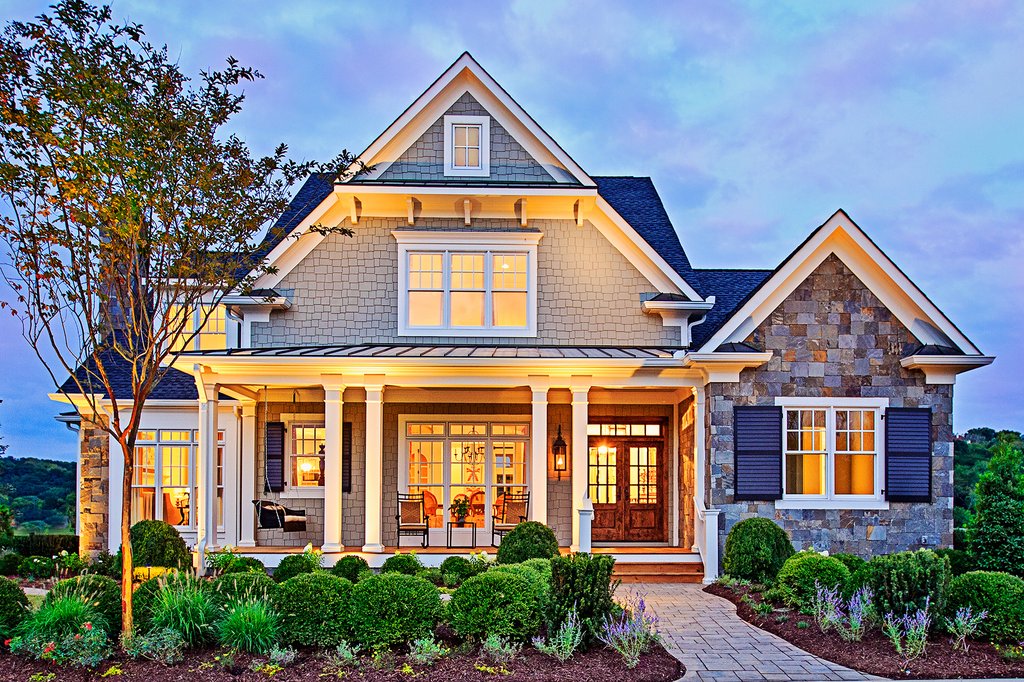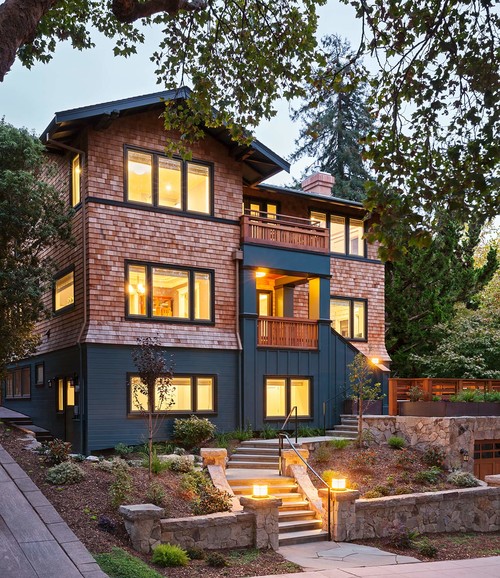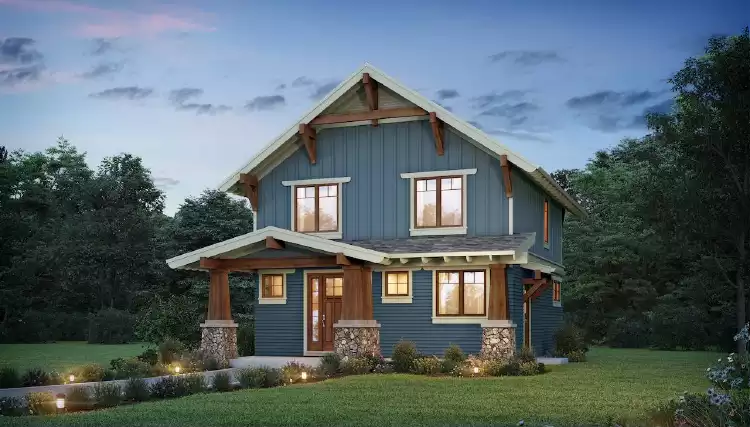The Role of Arts & & Crafts Architects in Elevating Architectural Solutions in Residential Style
Arts and Crafts architects substantially influence residential design via their commitment to workmanship and sustainability. They focus on handmade information and natural materials, which boost both visual appeals and area identity. By including clients in the style process, these architects create one-of-a-kind home that reverberate with individual preferences. This method questions about the future trajectory of property architecture and its prospective effect on community characteristics. craftsman style house. What exists in advance for this ageless layout philosophy?

The Concepts of Arts and Crafts Architecture
The essence of Arts and Crafts architecture exists in its dedication to craftsmanship and simpleness. This architectural motion arised in the late 19th century as a feedback to industrialization, highlighting the worth of handcrafted information and all-natural materials. The concepts of Arts and Crafts architecture prioritize performance and consistency with the environment. Structures commonly feature low-pitched roofing systems, wide eaves, and revealed rafters, promoting a sense of unity with nature.
Artisans played a significant role in this style, frequently integrating ornamental elements like tarnished glass, ceramic tiles, and woodwork, which reflect regional workmanship. The color scheme tends to be natural and restrained, enabling buildings to blend perfectly right into their surroundings. Additionally, the layout encourages open layout and public rooms, fostering a sense of togetherness. On the whole, the concepts of Arts and Crafts architecture commemorate the beauty of simplicity and the significance of human link to both nature and neighborhood.

Sustainable Practices in Residential Layout
While the demand for eco responsible living remains to expand, lasting methods in property design have gotten significant traction among architects and homeowners alike. Architects are progressively integrating energy-efficient technologies and lasting materials into their layouts, intending to minimize carbon impacts and improve energy preservation. Methods such as passive solar style, eco-friendly roofs, and rainwater harvesting systems are coming to be typical elements of contemporary property architecture.
In addition, the choice of locally sourced materials lessens transportation emissions and supports regional economic situations. Emphasis on natural light and air flow not just improves interior air top quality yet additionally lowers dependence on man-made lighting and climate control systems. These sustainable techniques mirror a dedication to protecting the atmosphere while supplying house owners with comfy, reliable home. As understanding of ecological problems grows, the combination of sustainability in residential design is poised to become a specifying feature of contemporary architecture, assisted by the principles established by Arts and Crafts architects.
Modification and Personalization in Home Style
Modification and personalization in home design have actually become vital fads in action to the growing need for distinct living atmospheres that show private tastes and lifestyles. Home owners increasingly seek to customize spaces that resonate with their individual identifications, leading to a much more significant connection with their living areas. craftsman style house. This activity motivates architects to involve customers in the design process, cultivating partnership that assures the last result personifies the house owner's vision
Elements such as bespoke designs, customized materials, and tailored surfaces permit for a diverse variety of expressions in residential style. Arts and Crafts architects play a critical duty in this development, highlighting workmanship and quality. Their emphasis on incorporating artistic elements with functionality warranties that each home is not only visually pleasing yet additionally distinctively matched to the inhabitants' requirements. Consequently, this focus on customization boosts the total browse around this site domestic experience, creating spaces that are both personal and enduring.

The Impact of Arts and Crafts Architects on Area Aesthetics
As areas advance, the influence of Arts and Crafts architects greatly forms their visual landscape. By emphasizing handmade information, natural products, and traditional building and construction strategies, these architects create homes that resonate with their surroundings. Their designs typically include local vegetations, appearances, and colors, cultivating a sense of consistency in between built atmospheres and nature.
The Arts and Crafts activity promotes area identity with architectural connection. By urging house owners to take on similar style concepts, areas establish a cohesive character that boosts visual appeal. This architectural uniformity not just enhances the visual experience but also instills a sense of pride among citizens.
The emphasis on sustainability and workmanship in Arts and Crafts architecture aligns with modern-day values, making these layouts pertinent in contemporary setups. Inevitably, Arts and Crafts architects add considerably to the overall elegance and social stability of neighborhoods, leaving a lasting effect on their visual tradition.

Future Fads in Arts and Crafts Architecture
With a raising focus on sustainability and personalization, future patterns in Arts and Crafts architecture are poised to blend This Site traditional craftsmanship with modern-day technology - craftsman style house. Architects are most likely to prioritize green products, making use of reclaimed wood and natural rock to enhance the sustainability of domestic designs. The combination of wise home technology will come to be prevalent, enabling customized living experiences without endangering aesthetic stability
Additionally, the rebirth of artisanal methods will certainly cultivate a renewed appreciation for handcrafted elements, such as bespoke cabinets and personalized floor tile work. Future layouts may likewise mirror a focus on community-oriented rooms, motivating communication and link amongst citizens. Exterior living areas will certainly obtain prestige, perfectly incorporating nature into the home environment. As Arts and Crafts architecture develops, it will certainly proceed to recognize its roots while adapting to contemporary demands, creating unified rooms that reflect specific values and lifestyles.
Regularly Asked Questions
What Motivated the Arts and Crafts Activity in Architecture?
The Arts and Crafts movement in architecture was inspired by a response versus automation, stressing handcrafted quality, all-natural materials, and a return to conventional workmanship, intending to produce harmonious, practical spaces that commemorated artistry and originality.
How Do Arts and Crafts Architects Collaborate With Customers?
Arts and crafts architects work together with customers via open dialogue, prioritizing personal demands and aesthetics. They stress workmanship and sustainability, promoting a collaboration that integrates the client's vision with the engineer's know-how in style and products.
What Products Are Commonly Utilized in Arts and Crafts Residences?
Usual products in Arts and Crafts homes consist of natural wood, rock, and brick, stressing workmanship and organic appearances. These elements produce a warm, inviting ambience, mirroring the activity's dedication to top quality and simpleness in layout.
Exactly how Do Arts and Crafts Designs Improve Indoor Living Rooms?
Arts and Crafts styles improve interior living rooms by advertising natural light, open floor strategies, and handcrafted information. These components foster a warm, welcoming atmosphere, motivating a connection in between i was reading this homeowners and their atmospheres through thoughtful, functional aesthetics.
What Are Some Famous Examples of Arts and Crafts Architecture?
Famous instances of Arts and Crafts architecture consist of the Gamble Residence, Greene and Greene's work of art in The golden state, and the Robie Home by Frank Lloyd Wright. These structures display handcrafted details and harmony with nature, specifying the activity's essence.